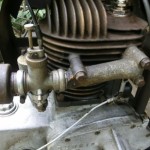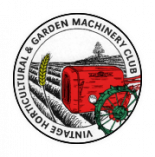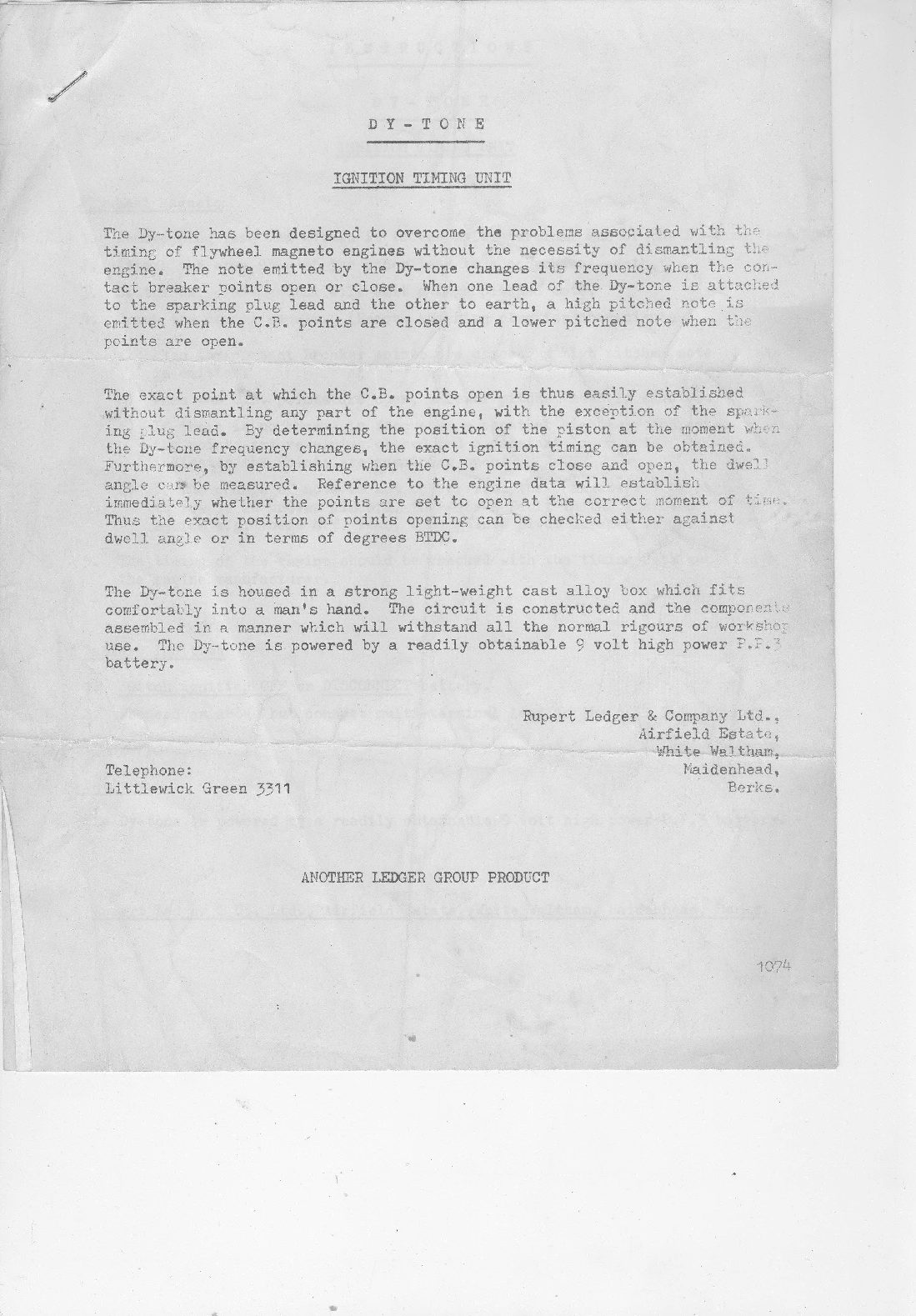Forum Replies Created
-
AuthorPosts
-
September 2, 2021 at 11:21 am #37814
 wristpinParticipant
wristpinParticipantYour resistance reading on the primary is probably ok but the zero on the secondary is not good – a good coil will show resistance on both windings.
A bad winding on my meter will either show 0.L ( open loop ) or 0.00 for a dead short – no resistance. So the zero on your secondary suggests an internal dead short – not unusual for an old coil with internal corrosion.August 31, 2021 at 8:27 pm #37801 wristpinParticipant
wristpinParticipantThe HT lead is connected to the secondary coil winding. Check resistance between end of HT and earth. The primary winding is earthed at one end and the other probably shares a common terminal with the condenser on the points. Disconnect the condenser make sure that the points are open and take a resistance reading between that lead and earth.
August 31, 2021 at 1:30 pm #37796 wristpinParticipant
wristpinParticipantI take it that you have fitted either a Nova or Meco trigger module ? I’m a bit puzzled about this 14 volts from the HT lead; one would expect in the region of 22k + volts from a standard ignition system in good health – that is a good belt!
The coil may have two low tension wires one to ground and the other to the points and condenser – or in your case the module . If it only has one lt lead that goes to the module and the coil is grounded via its fixing screws to the cylinder block.
The Meco module has just one terminal and is grounded via its fixing screw. The Nova has two terminals , + & – . Connect the + to the coil and the – to ground.
I would be inclined to return the engine to a standard points, condenser and coil configuration and get it sparking . Then, perhaps try the electronic trigger module.
A couple of good images showing all your ignition components in situ May reveal what’s amiss.August 30, 2021 at 9:15 pm #37784 wristpinParticipant
wristpinParticipantAm I right in thinking that your 301 has contact breaker points in a small metal box on the back of the engine with an externally mounted condenser ? If that is the case, before we go any further try for a spark with the points cover removed – the cover can short out the system.
August 28, 2021 at 10:55 pm #37776 wristpinParticipant
wristpinParticipantI don’t think that Meetens ever held much ( any?) Aspera / Tecumseh stuff. Also, it’s my understanding that Meetens have recently sold out to L & S Engineers. I’ve never actually looked at the L&S site for Tecumseh stuff but it may be worth a look. Another supplier worth a look is JAPG. If you are really desperate, try the USA but by the time you’ve paid shipping and UK duty and clearance charges the costs will build up.
When Tecumseh UK closed down all their parts stock was bought by Peter Elliott who trades as Meadowbrook Enterprises and has an eBay presence. However Tecumseh’s inventory would have comprised mainly parts for current products. Further more it is roughly ten years since Peter Elliott took over the stock and that will have been depleted over the years.
As far as I know Jon Cruse is the most likely source of anything that’s left and your comment re his health may account for a recent unanswered email enquiry of mine.Old petrol Flymos used variations of Aspera, Tecumseh, Tecnamotor and Kirby Lausons, all using similar ignition parts branded, Phelon, Ducati and Scintilla – Most interchangeable. Pre Covid a beat up old Flymo could often be bought at our local collective auction for less than £20.
Gaskets are reasonably simple to make diy and I have a friend who can laser cut perfect ones, but he needs a pattern. However he can clean up a tatty one on the ’puter before producing a perfect result. I’m not volunteering his services as it’s not his main job and he has the kit for a different purpose, but there are probably others who can.
You list coil, condenser and points but are you sure that you need them ? I’ve rebuilt many Aspera Engines over the years and other than an occasional condenser I don’t recollect much need for coils or points.
August 26, 2021 at 10:45 pm #37764 wristpinParticipant
wristpinParticipantIs that where all the Kilner Jars have gone?
August 26, 2021 at 10:04 pm #37762 wristpinParticipant
wristpinParticipantTakes me back to the late 50s when I bought a Lambretta for a fiver that the owner had given up on. It would start and idle but not accelerate. To cut a story short the owner had managed to get it firing at around Bottom Dead Centre. That was possible as the centrifugally controlled cam inside the flywheel had been assembled 180 degrees out. Fast forward to 2009 I visited a customer to fix her ride on mower and there was a rather sorry looking Lambretta that her late husband had used for commuting around farm. A deal was done . Seemed like a good idea to convert it from points to electronic ignition . Kit fitted, pig to start and disappear in reverse – the engine was running backwards. A word with the suppliers of the ignition kit and soon sorted – I was not the first.
All of this is a long winded way of saying what others have said in far fewer words that incorrect two-stroke ignition timing can have strange effects.
A few things that can accumulate to contribute to an issue.
Points gap. Start by setting that accurately mid way between the top and bottom figure .
When positioning the piston only rotate the crank in the running direction of rotation so that any big end wear is absorbed. If you go too far don’t turn it back which will “ stretch” any slack – go right round and compress the wear again.
Then, if you can devise a way of locking the crank it will avoid the possibility of upsetting all your careful measuring while you set the point at which the contacts open.
The traditional way is with a fag paper . Correctly set up one of the windows in the flywheel will just give you room to insert it between the shut contacts and slowly turn the flywheel until you feel it start to release. At that point it’s time to tighten the flywheel nut. Villiers used to supply a couple of designs of wrenches designed to be hit with a lump hammer to ensure that the nut is good and tight. I have to say that I don’t get on with the lump hammer and wrench, I prefer a homemade flywheel band holder – a steel strap with a long handle used in conjunction with a socket on a long breaker bar. Why couldn’t Villiers give a torque setting ?
Going back to the fag paper test for determining the contact opening point , it is a bit of a three handed fiddle. Back in the 60s there was a company called Rupert Ledger who made various bits of small engine test equipment, one being the Dy-Tone – one lead connected to the HT lead and the other to any good earth. It emits an audible tone which changes the minute the contacts open. As a bonus, a fuzzy change of tone says dirty points. The other bonus is that it’s hands free so while moving the flywheel on the crank and pinching up the nut with no messing about with fag papers one’s ears look after detecting the contact opening point.August 21, 2021 at 4:50 pm #37722 wristpinParticipant
wristpinParticipantHeard of radial engines, rotary ( both aircraft and automobile) but never a centrifugal engine – hope that someone explains.
August 16, 2021 at 1:03 pm #37693 wristpinParticipant
wristpinParticipantIdeally you would use a Knock Off tool which is a lump of metal that screws onto the crank in place of the nut. Screw it fully on, back it off one turn the give it a sharp tap with a fair size hammer while either applying moderate leverage to the fly wheel . If the engine is loose from the chassis I take the weight of the lump by gripping the flywheel in one hand a smiting the knock off tool with the other – the weight of the lump is enough without leverage. Knock off tools are still available and not expensive. If you have, or know a man with a lathe, it’s not difficult to make one.
You can do the same using the flywheel nut but there is a risk.Some Aspera / Tecumseh flywheels have three untapped holes near the centre to take the self tapping screws from the manufacturer’s puller – quite easy to duplicate with a bit of scrap and three Taptite screws used by various manufacturers for assembling machines – always save them when scrapping anything that uses them.
A selection of knock offs from my tool box – no duplicates !
August 11, 2021 at 4:04 pm #37645 wristpinParticipant
wristpinParticipantSome years ago they sold red, Toro badged Harriers in the US. Don’t know whether they still do.
July 29, 2021 at 10:48 pm #37574 wristpinParticipant
wristpinParticipantIt’s also worth remembering that by using the module you will have done away with the governor system.
There is a way around that but whether its worth the faff is another matter. It basically involves leaving the points in place, disconnecting the condenser and mounting the module of choice out side the magneto. The points are re-purposed to act as a governor controlled cut out.
Whether “snake oil or sliced bread depends on the situation. The two currently available aftermarket trigger modules, Mova and Meco are not total “snake oil” as they do work well on many engines. Equally they aren’t all “sliced bread” as they wont perform on some engines. I have fitted many Mecos to Villiers F12s and 15s with absolute reliability and I know people who swear by the Nova for old cast iron single pot Kohlers.
Interestingly, while the Nova and Meco modules are sold as one size fits all, back in the 80s the Australian made Atom modules came in different colours and characteristics. The ones most commonly seen in the UK was the brown type 9 for chainsaws, brush cutters and other high revving two strokes. The blue type 7 was as near a general purpose as they got and the green type 5 was recommended for post 1960 Briggs with two leg armatures. Being Australian they did a special for the uncommon in the UK twin cylinder Victa.
July 29, 2021 at 2:43 pm #37572 wristpinParticipant
wristpinParticipantThe only chap at the “ big houses” with mechanical experience was usually the chauffeur who was in charge of the mower and perhaps the generator for the house.
In 1981, at a stately home nearby to me, the retired chauffeur who lived on the estate, was still in charge of their Dennis that had arrived new just pre WW2.July 28, 2021 at 8:38 pm #37568 wristpinParticipant
wristpinParticipantIt also looks as though it is fitted with a modern replacement coil. I think that step one will be to get that coil tested. You don’t mention a condenser but if you also have that, I would get that tested as well. If both the coil and the condenser have tested out ok, I would clean the points and reassemble the mag to original setting with its original components. If that gets it running it’s then up to you whether you stick with it or try the module again.
I know that those Nova ignition trigger modules are marked + and – but I suppose that your issue may have just been one of incorrect polarity.July 26, 2021 at 12:06 pm #37548 wristpinParticipant
wristpinParticipantWise words indeed Mr F. – thank you. I can’t remember how I did the original timing but I’ve just pulled it apart and worked back from basics. No longer snatches the rope and runs considerably smoother – not in the F15 class but perfectly useable.
When rain stops work in the garden I will turn my attention to the spare engine, a gift of unknown origin.
Interesting that you mentioned the Webb 24: I inherited one in a house move in the late 60s that had thrown a rod and been re- engined with a Tecumseh H40; a truly horrible lump with a carb that dripped fuel on to the rubber covered rear roller with a predictable result. I first made a drip tray to go under the engine but soon gave it a 5HP BS which turned it into the mower that it should have been. The belt driven Webb24 was an under rated favourite of mine which got a bad reputation because, even some in the trade, didn’t understand how to set up the belts properly – not helped by a diagram in the owner’s handbook showing a belt keeper at exactly the wrong angle where it could cause the most wear.July 25, 2021 at 4:10 pm #37540 wristpinParticipant
wristpinParticipantThank, That may be obvious but worth giving it a go. I think that I tried it before setting the project aside but well worth another go . Shame that it’s not as easy as just rotating a distributor a degree or two. I’ve got a complete spare engine so I may bolt that down to the test bench and have a play. Watch this space.
The Anzani is, as you observe a bit of a beast. It’s built like a battle ship and the amount of wasting on the chassis side exposed to the weather would have been the finish of many a lesser machine. It’s actually a very simple design: the cutter unit is identical to the one that they used on their “ articulated” rider.
-
AuthorPosts


